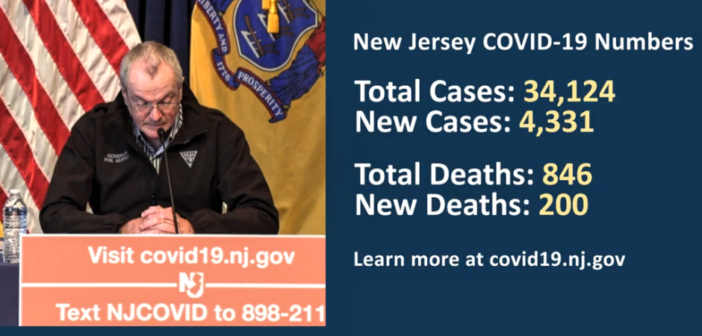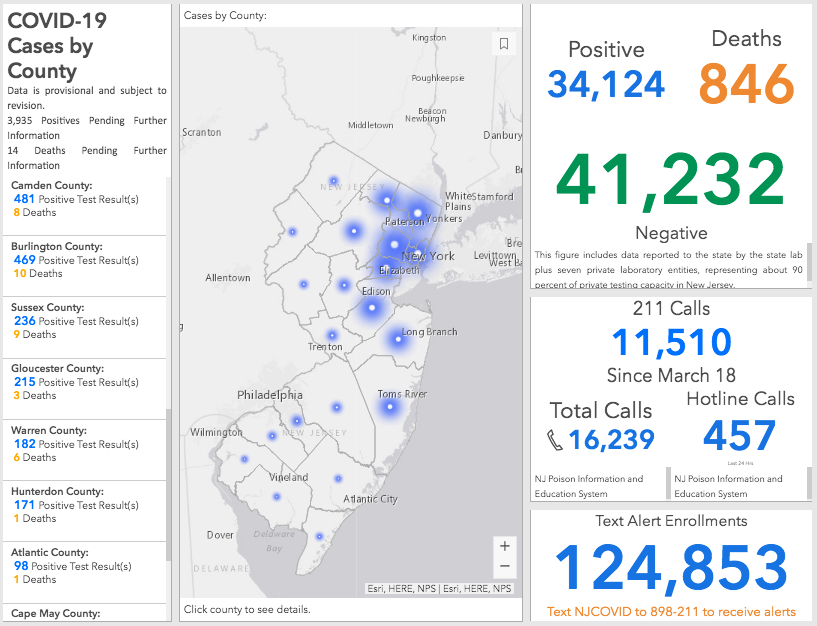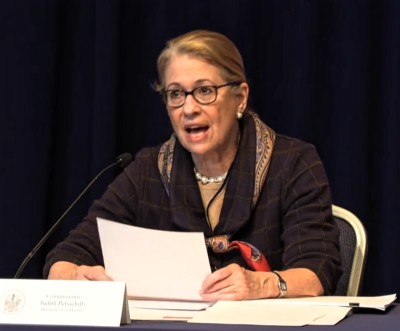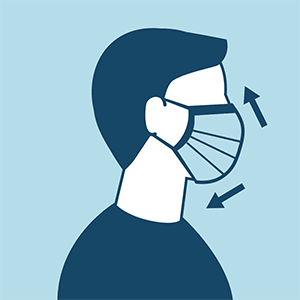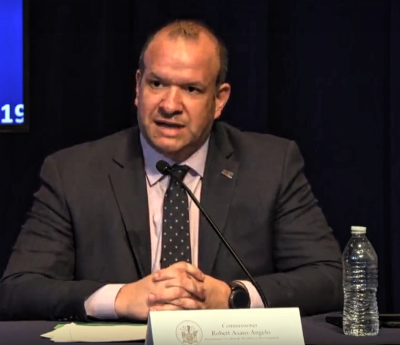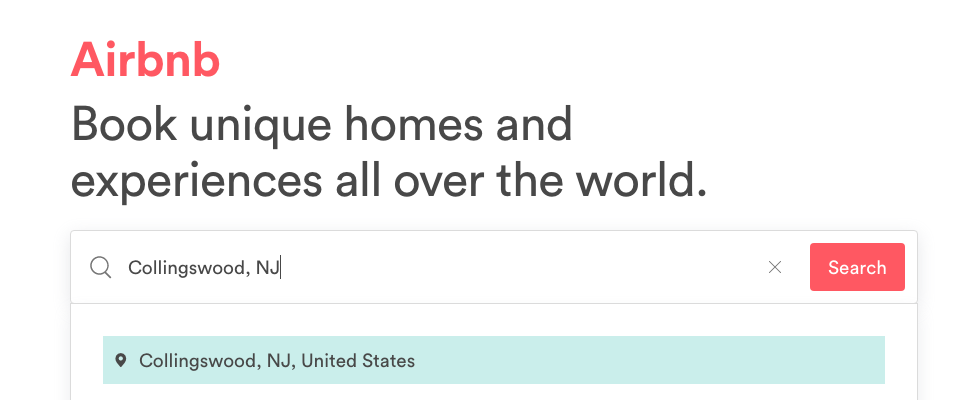Lacking staff or critical care beds, North Jersey hospitals continue to divert patients as cases swell. Murphy gives shore towns the authority to prohibit seasonal visitors, saying “This is not how social distancing works.”
By Matt Skoufalos | April 4, 2020
Another 4,331 New Jerseyans are confirmed to have contracted novel coronavirus (COVID-19), bringing the statewide total to 34,124, Governor Phil Murphy said Saturday.
Sadly, another 200 residents have perished from complications related to the virus, bringing the total number of lives lost to 846.
That’s 100 more New Jersey residents than died in the September 11, 2001 terrorist attacks, the governor noted, as he observed a moment of silence.
“This pandemic is writing one of the greatest tragedies in our state’s history, and just as we have committed to never forgetting those lost to 9/11, we must commit to never forgetting those we’re losing to this pandemic,” the governor said.
At least one more Camden County resident has perished from COVID-19-related complications, and at least another 74 new local cases are expected to be announced today.
In North Jersey, the COVID-19 caseload is surging, with nine hospitals diverting patients last night for want of staff to care for them and a capacity of critical beds to house them.
New Jersey Health Commissioner Judy Persichilli renewed her call for healthcare workers to volunteer to support hospitals in caring for the sick, and said the department will be sending out “a crisis alert” for more staff.
Throughout the state, 4,000 hospital patients have tested positive for COVID-19, Persichilli said; 1,494 are in critical care, and 85 percent of those (1,263) are on ventilators. Another 2,000 persons are under investigation and awaiting test results.
Of the 846 who have perished from the virus, 61 percent are male and 39 female. Only one percent are younger than 30, six percent are aged 30-49, and 16 percent are aged 50-64. Fully one-third of all COVID-19 deaths are from those aged 65-79 and 46 percent are older than 80 years.
Among those who’ve passed, 35 percent have a documented underlying health issues, and 9 percent were associated with a long-term care facility. Of the state’s 375 long-term care facilities, 148 have had at least one positive case of COVID-19.
Building capacity
Murphy said that hotels and college dormitories, “particularly those located in hotspot areas or in close proximity to hospitals which are nearing capacity,” are likely to be brought into service to house those battling illness under the pandemic.
“This is an enormous effort to bring thousands of new beds online, which also requires us to plan for medical and administrative staffing, providing wraparound services, and meeting our equipment and supply needs,” the governor said.
“At every level this is a data-driven, ‘Moneyball’ process,” he said. “We know where we expect our numbers to go in the coming weeks, and we have to do the difficult things to prepare for that.”
The first field medical station in New Jersey will open Monday in Secaucus. Persichilli said it’s possible that patients could be transported from North to South Jersey at some point during the pandemic, depending upon the availability of beds to treat them.
Here is a look into the Field Medical Station at the Meadowlands Exposition Center along with some insight, provided by Colonel Patrick Callahan, about the partnerships that are making this facility possible. pic.twitter.com/PZmlxbcmwY
— NJSP – State Police (@NJSP) April 2, 2020
“It’s too early to tell how much movement we’re going to have because every hospital has increased their actual bed capacity, putting beds and stretchers in areas that have never been used before,” Persichilli said, including post-anesthesia and other recovery rooms, even cafeterias.
“Almost every hospital is increasing their critical care capacity because they have to,” she said. “We may have to move a lot of supplies, equipment, and patients so that everyone gets taken care of.”
Facemask guidance
People who aren’t showing signs of COVID-19 can still spread the virus, so Persichilli advised residents to follow guidance confirmed by the U.S. Centers for Disease Control (CDC) and wear “a simple cloth face covering that covers the nose and the mouth” when going out in public.
“A face covering is lowering your chance of spreading the virus to others,” she clarified; “it is not a failsafe measure to keep you from getting sick.
“If you wear a mask, you are protecting others,” Persichilli said, “and if others wear a mask, they are protecting you.”
She also asked that residents reserve any N95 masks they have for “healthcare workers and other first responders that are caring for the sick.”
“My grandmother died in the 1918 flu epidemic, and the same thing that would have saved her life is what we’re asking people to do today: social distancing,” Persichilli said. “That’s what stopped that pandemic from claiming more lives than it actually did.”
Historic unemployment claims, federal benefits pending
New Jersey Commissioner of Labor and Workforce Development Robert Asaro-Angelo addressed residents’ frustrations with difficulty accessing state aid systems during the pandemic.
Its 40-year-old mainframe systems are struggling to manage a volume of claims and calls “exponentially higher” than any time in the history of the system, he said.
“We hear it from our own family members, friends, friends of friends,” Asaro-Angelo said.
“We know this is new for a lot of people, so we’re trying to make our clunky, old applications as user-friendly as possible.”
The system buckled under a 1,600-percent increase in volume in the first week of the crisis; Asaro-Angelo said, likening volume to “a stadium with 10,000 seats but there are a million people waiting to get in.”
Half of all applicants will receive their benefits within two to three weeks of filing a claim, but sometimes examiners must review them. Workers who have been temporarily furloughed, independent contractors, or those who filled out their applications incompletely “are not uncommon issues for our staff, but they do require verifying important information,” Asaro-Angelo said.
“Claims will be paid for each week eligible for benefits no matter when the claims get processed,” he said, encouraging residents to try to access the system early in the morning or late in the evening when volumes are lighter.
Once the federal government issues its guidance on disbursement of funds from the CARES Act, New Jersey residents will receive an additional $600 per week for four months, which Asaro-Angelo said will be released a few days after regular unemployment insurance benefits are issued.
“This is the biggest emergency our department has ever or will ever face,” he said. “Our workers and businesses have paid into the system precisely for this moment, and now it is here for you.”
Murphy said New Jersey continues to lobby the U.S. federal government for aid, from financial support to material goods.
“We’re in a world of hurt,” the governor said. “Not only are expenses exploding, our revenues have fallen off the table, and that’s in addition to what you all are going through as individuals.”
Shore towns can close to visitors
To stave off the strain that Jersey shore communities are already facing during the pandemic, Murphy announced Saturday that he is revising Executive Order 108 to allow individual municipalities to “prohibit all rentals to transient guests or seasonal tenants for the duration of this emergency, including all hotels and motels.
“We have heard too many stories, especially from our shore communities, of people trying to relocate for the time being into their towns from impacted areas,” the governor said.
“This is not how social distancing works,” he said. “No one should be leaving their primary residences, especially the shore communities that do not have the health and first-responder infrastructure in place to accommodate an influx of residents.”
Any town that takes such action cannot interfere with statewide housing plans, restrict healthcare workers, or temporary housing or housing assistance.
Read our ongoing round-up of COVID-19 coverage here.
Please support NJ Pen with a subscription. Get e-mails, or follow us on Facebook, Twitter, and Instagram.

